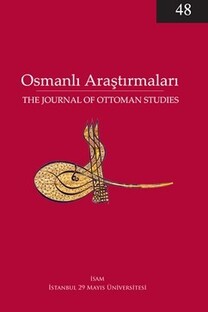Klasik Dönemden Batılılaşmaya Osmanlı Mimarlığında İdealleştirme Olgusu ve Batı Mimarlığıyla Olan Mukatesesi
Anahtar Kelimeler:
-
Klasik Dönemden Batılılaşmaya Osmanlı Mimarlığında İdealleştirme Olgusu ve Batı Mimarlığıyla Olan Mukatesesi
is study discusses how the tradition of idealization based on the drawings and texts in Western architecture was handled in Ottoman architecture. From the 16th century forward the traditional Ottoman architectural culture was one founded on ideal types. However, these types were not based on historically ideal essences as was the case in the West. While the Ottoman architectural culture was based on advanced and diverse popular types, these types were not determined according to the criteria of an ideal period in the past. For this reason, the traditional Ottoman architecture was open to every type of innovation, provided that it was not contrary to the existing structure of culture and appreciation, as there simply was no notion of an ideal past which served to limit innovations in architecture; rather it was based on "current time." In short, this study examines the basic differences between the traditional Ottoman and Western architectural cultures and presents the idealizations of the former as they related to the past
Keywords:
Ottoman architecture, Idealization, Western architecture Ideal types,
- ISSN: 0255-0636
- Yayın Aralığı: Yılda 3 Sayı
- Başlangıç: 1980
- Yayıncı: TDV İslâm Araştırmaları Merkezi
Sayıdaki Diğer Makaleler
Ruus Defterlerine Göre XVI. Yüzyılda Osmanlı Eyalet Teşkilatı ve Gelişimi
XVI. Asırda Sarayın Sanatı Himayesi
Arşiv Belgelerine Göre Trablusgarp Savaşı'nın Osmanlı Topraklarındaki İtalyan Tebaaya Yansımaları
Tarık Zafer Tunaya'nın Anısına Yadigar-ı Meşrutiyet
Tutsan Elini Ben Fakirin -Osmanlı Edebiyatında Hamilik Geleneği
Vildan Serdaroğlu C., Tuba İşınsu DURMUŞ
Tek Parti Döneminde Muhalif Sesler
A. Teyfur ERDOĞAN, Cemil KOÇAK
Environmental History as an Emerging Field in Ottoman Srudies: An Historiographical Overview
